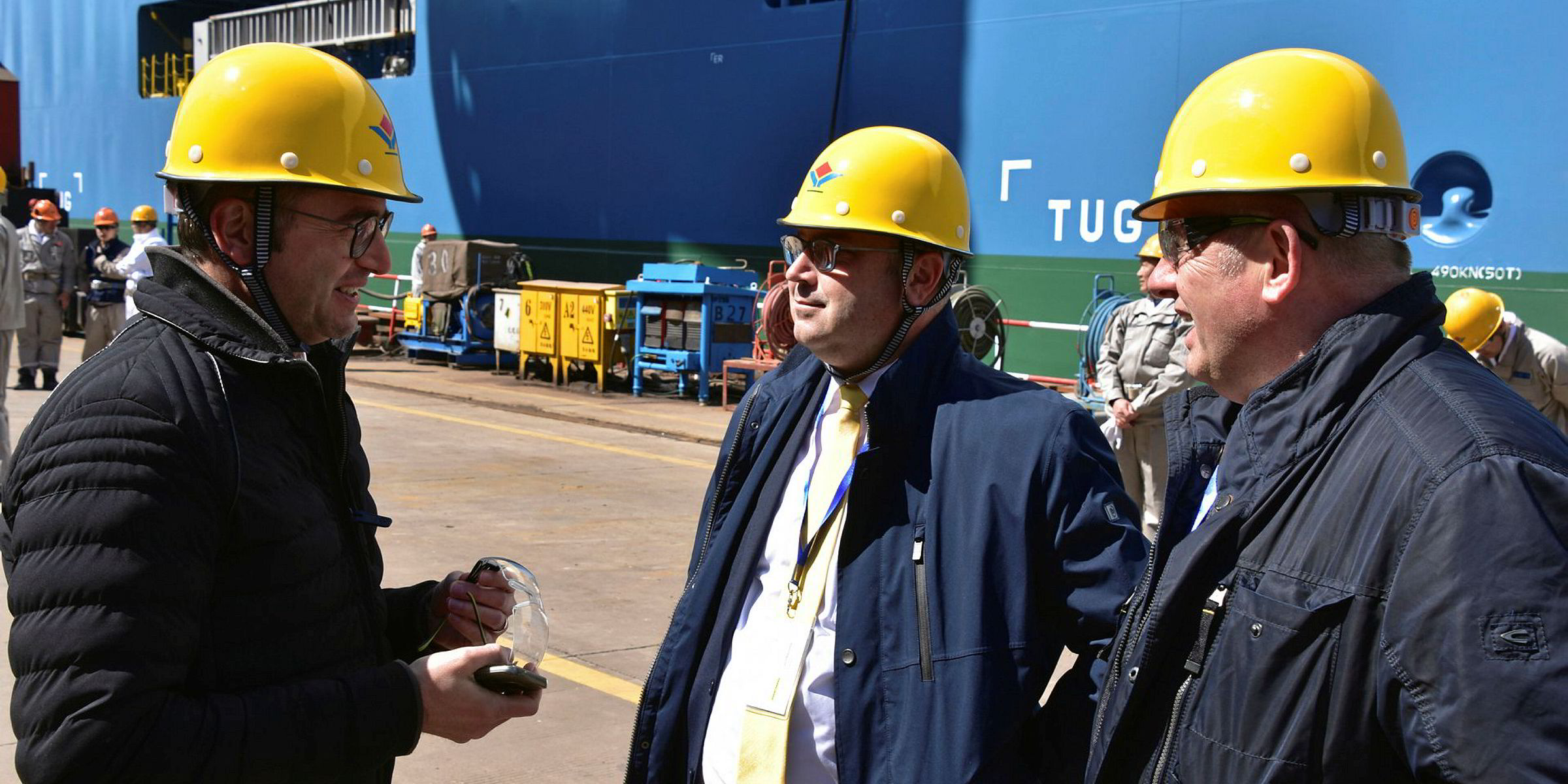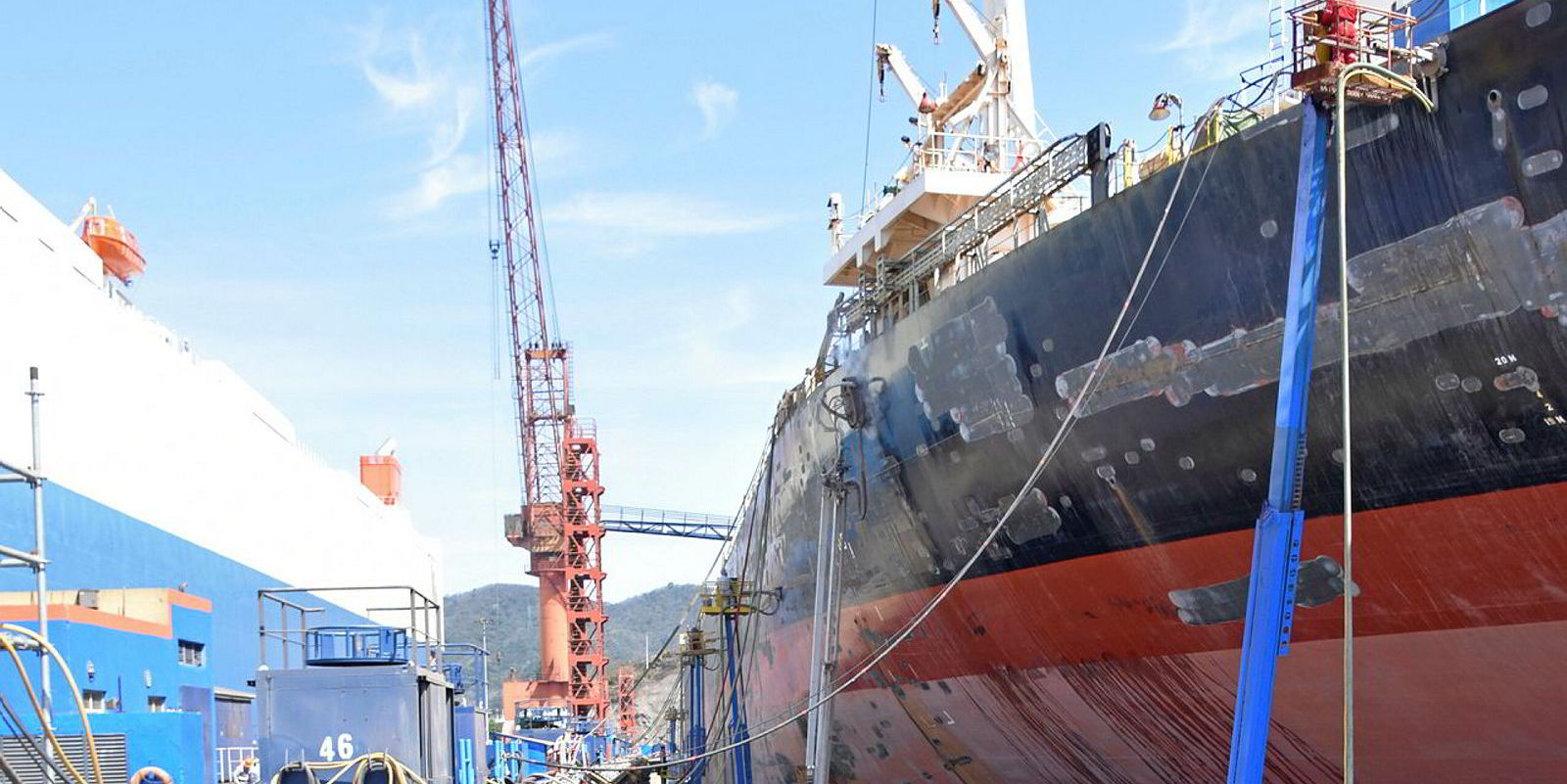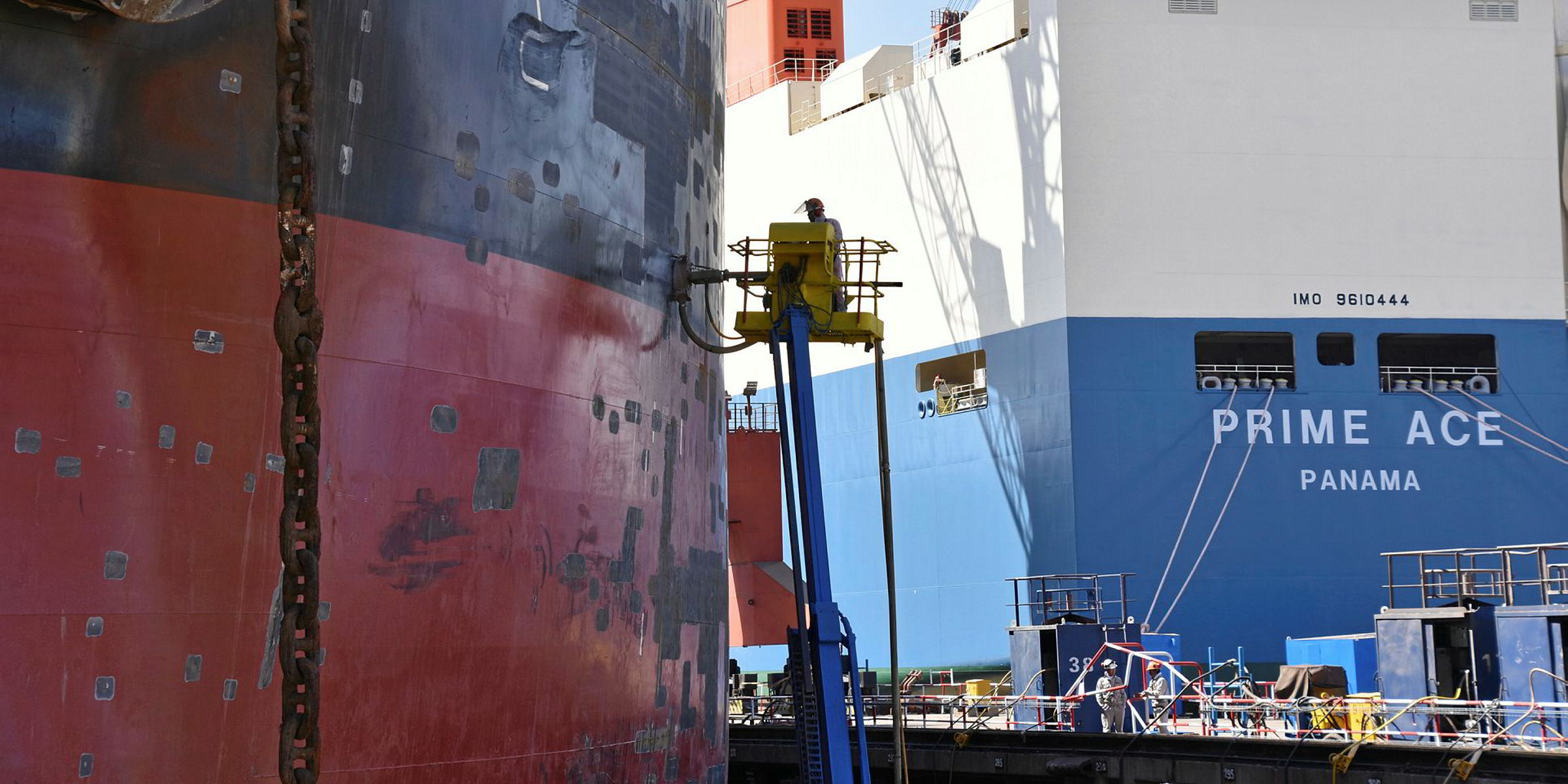For shipbuilding executive Chen Yong, the shiprepair business has not shed its reputation as a "3D" business — dangerous, difficult and dirty.
But speaking to invited representatives of his European and Asian competitors, the president of Zhoushan IMC-Yongyue Shipyard and Engineering Co (IMC-YY) said he believes it is time for that to change.
"Only the shiprepair industry has remained in the past, and it is time for our industry to take responsibility," Chen said. "We are using this demonstration to make a shiprepair technology revolution. We are promoting this technology."
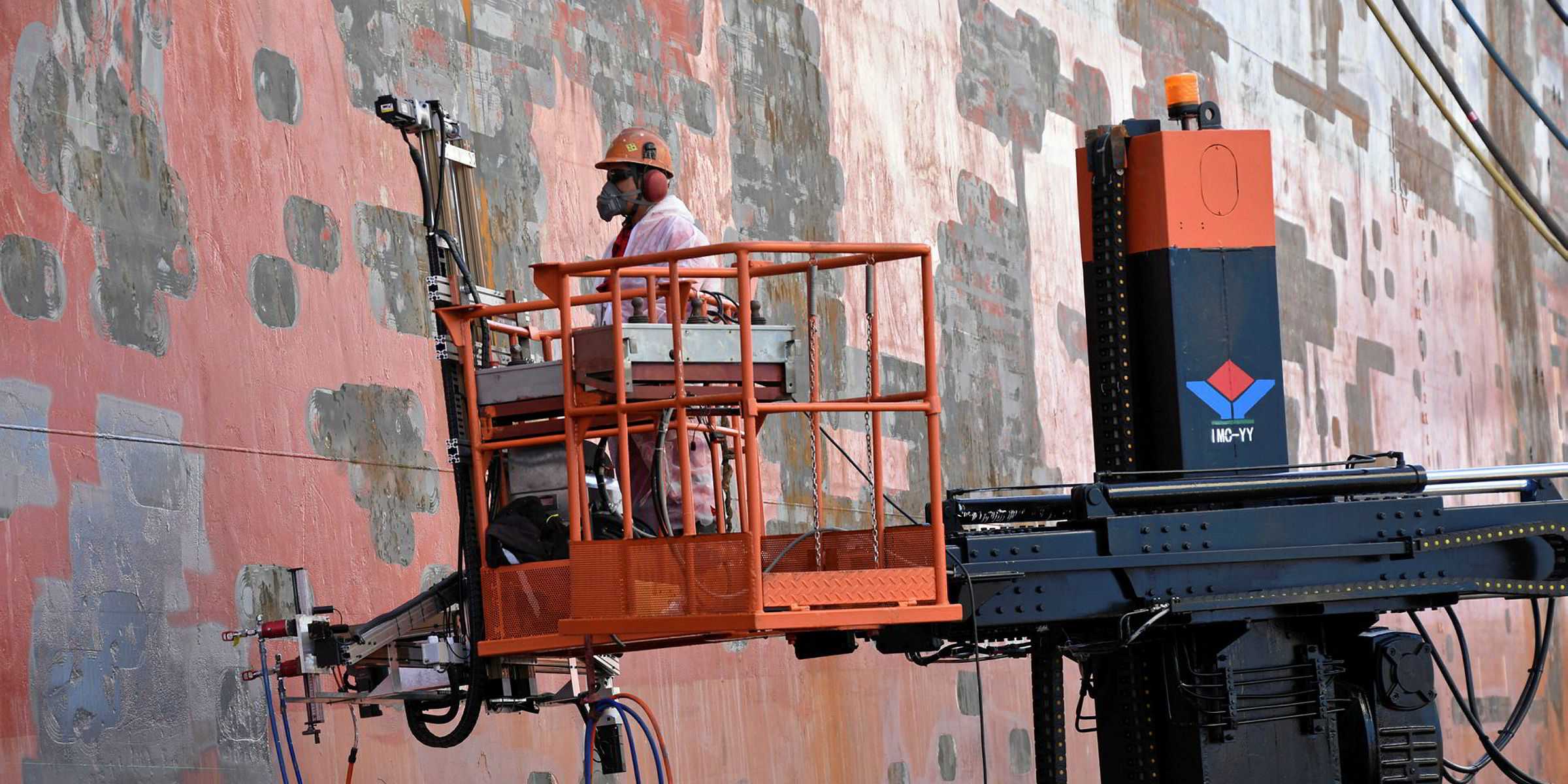
At Zhoushan, with the blessing of national and local government bodies, the Singapore-owned shipyard took the unusual step of inviting Chen's competitors to share his technical methods that are leading the world in environmental shiprepair.
Visiting repair yard experts hailed from Germany's Bredo Dry Docks, Laskaridis-controlled Astander and Astican in Spain, China Merchants-owned Yiu Lian Dockyards in Hong Kong, Japan's Tsuneishi Shipbuilding and Kato Engineering, and Thailand's Unithai, which is a sister yard to the host facility.
After watching work proceed on an MOL ore carrier — the 228,600-dwt Baosteel Education (built 2009) — guests heard technical and commercial presentations from IMC-YY plus its suppliers and partners in developing its green shiprepair technology.
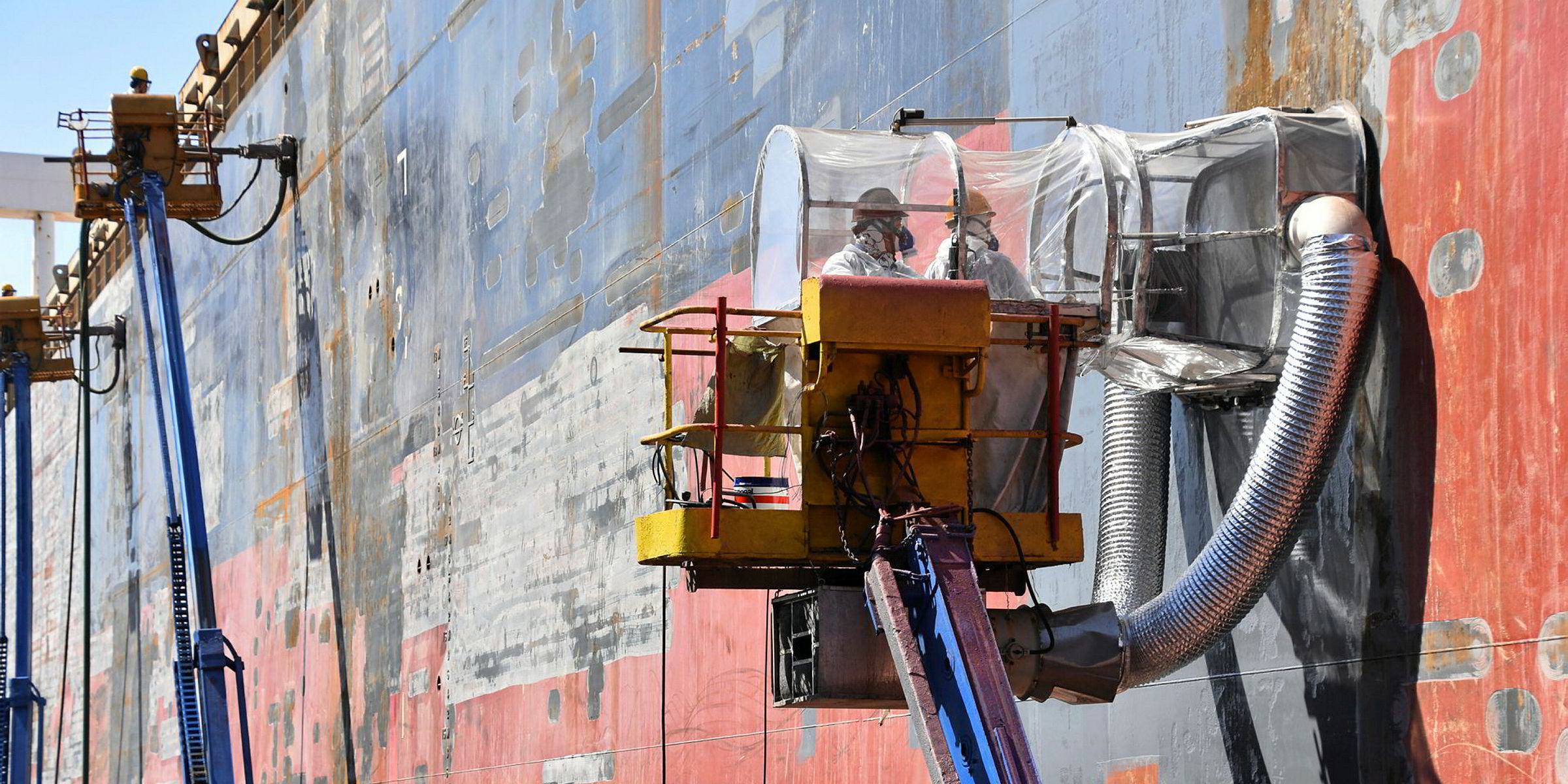
Together with German high-pressure pump manufacturer Hammelmann and coatings specialist Hempel, the IMC-YY yard has spent six years developing equipment and methods for ultra high-pressure hull blasting, allowing them to drop the gritty approach entirely over the past three years, starting with vessels from Norddeutsche Reederei and Maersk Line.
Some specialised ships, such as high ice-class vessels that are subjected to very heavy shear forces, may always need external grit blasting to provide a sufficiently roughened substrate for the coating to grip, admitted Hammelmann managing director Burkhard Helmig and Hempel's Karsten Muehlberg. And IMC-YY still does some internal grit blasting in difficult-to-reach cargo-space corners.
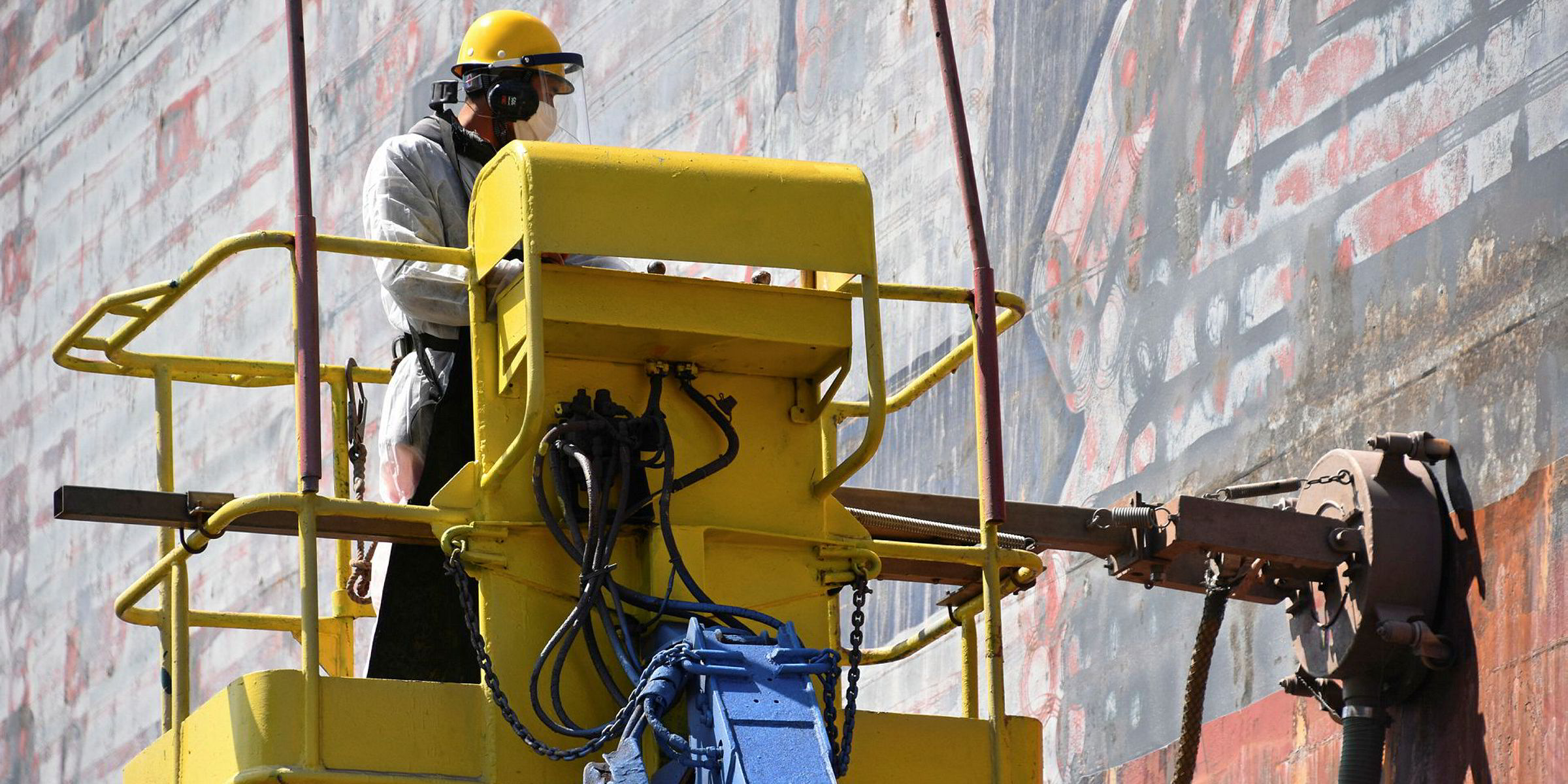
But, otherwise, all paint and rust is now removed by water under pressure of up to 3,000 bar (43,500 pounds per square inch).
If not for the 50 to 60 high-pressure water devices that IMC-YY has acquired, it would currently be buying, blasting, storing and disposing of an estimated 60,000 to 80,000 tonnes of grit per year based on its throughput of around 175 ships — and regulations on its use and disposal are tightening. The used grit cannot be reused without cleaning, which is not cost effective.
Besides the wet blasting, the yard has implemented vacuum-controlled painting methods to reduce pollution.
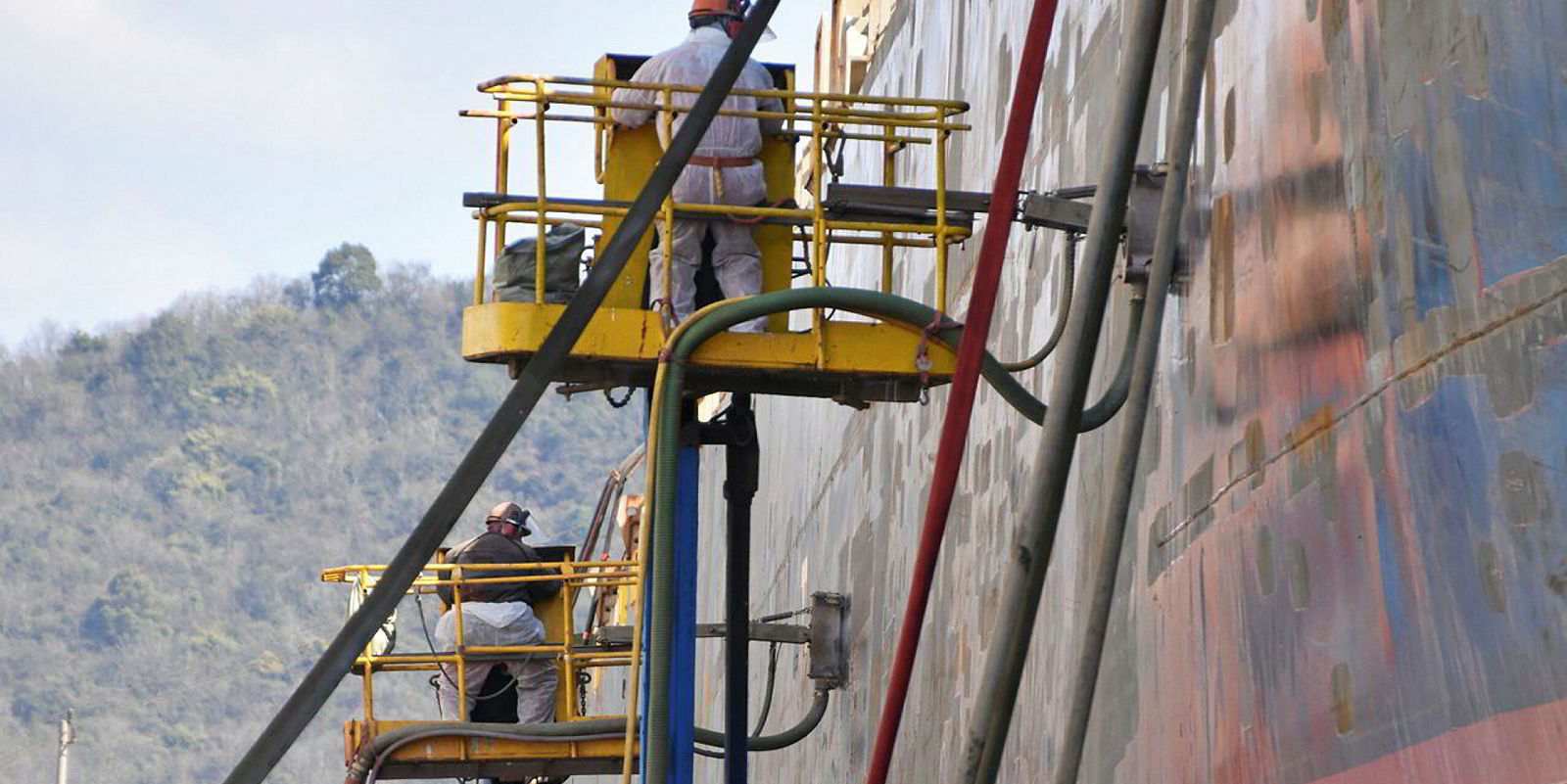
'Complete package'
“That makes us the first shipyard in the world to establish a complete package of hydraulic blocking and coating,” Chen said.
The far-flung Zhoushan Island group off Ningbo, to the south of Shanghai, under a single municipal government, is home to about 20 large newbuilding and repair shipyards including IMC-YY, and they account for something under 30% of China's shiprepair business. Chen believes the local authorities will have forbidden grit blasting within the next two years.
The advantages go beyond social and environmental responsibilities.
As China’s prosperity grows, cleaner and safer, easier service-economy jobs are available for an increasing share of the labour force. Wage demands rise by 15% or 20% per year in the case of IMC-YY and, like other industrial employers, it has faced recruitment and retention challenges. Chen sees improved conditions for his workforce of 1,100 as another important gain from a cleaner, grit-free workplace.
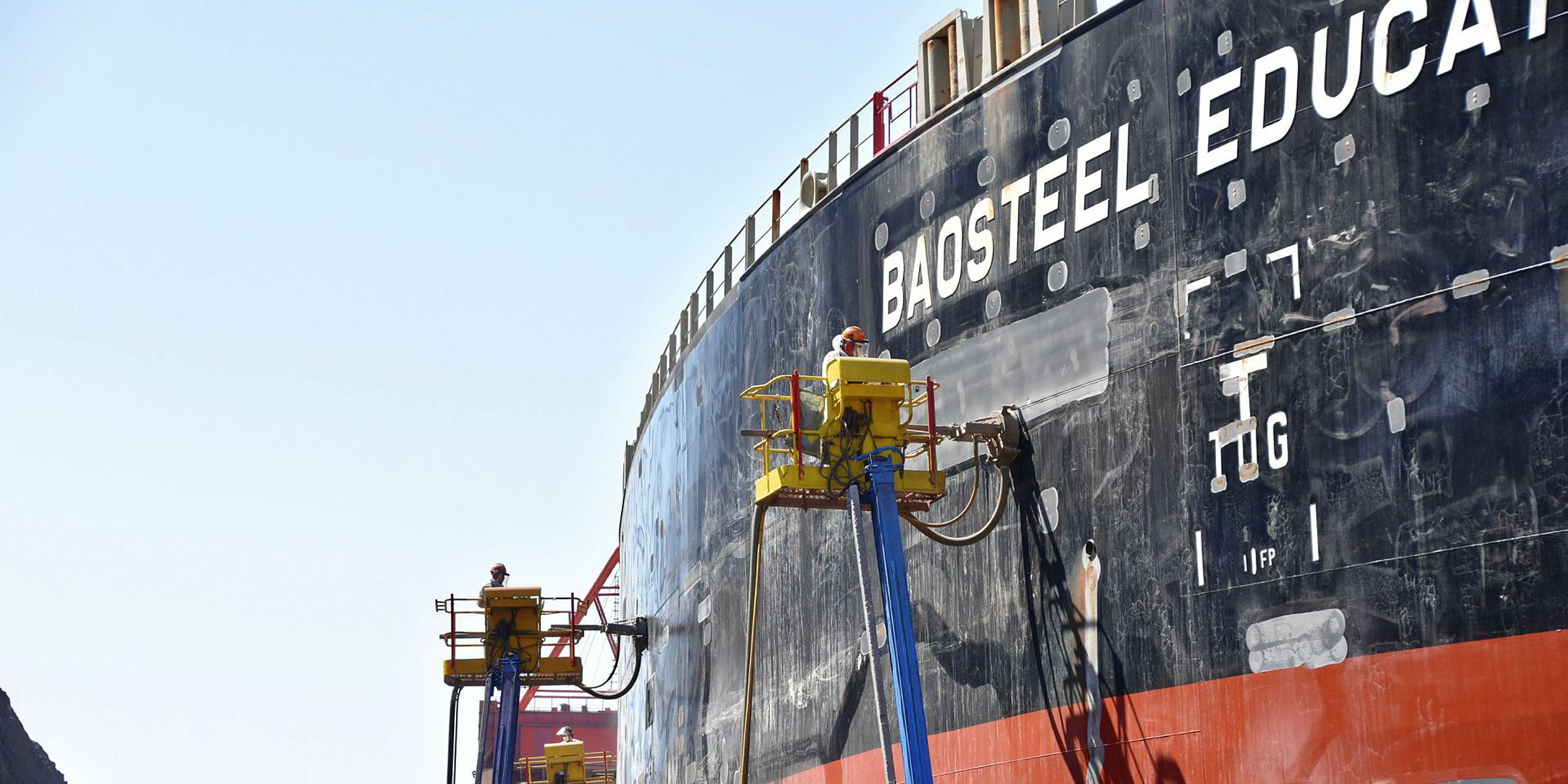
In addition, dry-docking work becomes easier to plan with high-pressure water blasting, and may lead to faster turnaround times for ships. Grit blasting in a dock can effectively delay other tasks that otherwise can be done simultaneously.
Chen especially touts the benefits to the shipowner of a vessel leaving a dry-docking with no residual grit in the machine spaces, the deck equipment and even the quarters.
“When we converted from traditional to hydraulic blocking, we faced a resistance problem with owners,” he said. “But after they have had one ship water blasted, the owners are happy because their ship leaves the yard clean. Especially the chemical tanker owners are happy.”
No subsidy
But the environmental and workplace health gains are finally what lie behind Beijing's push for green technology, which comes in IMC-YY's case in the form of the "Model Shipyard for Green Shiprepair" status that the China Association of the National Shipbuilding Industry (Cansi) has given it. That entails a responsibility for encouraging other Chinese shipyards through a number of closed sessions over the past year before the recent international open house.
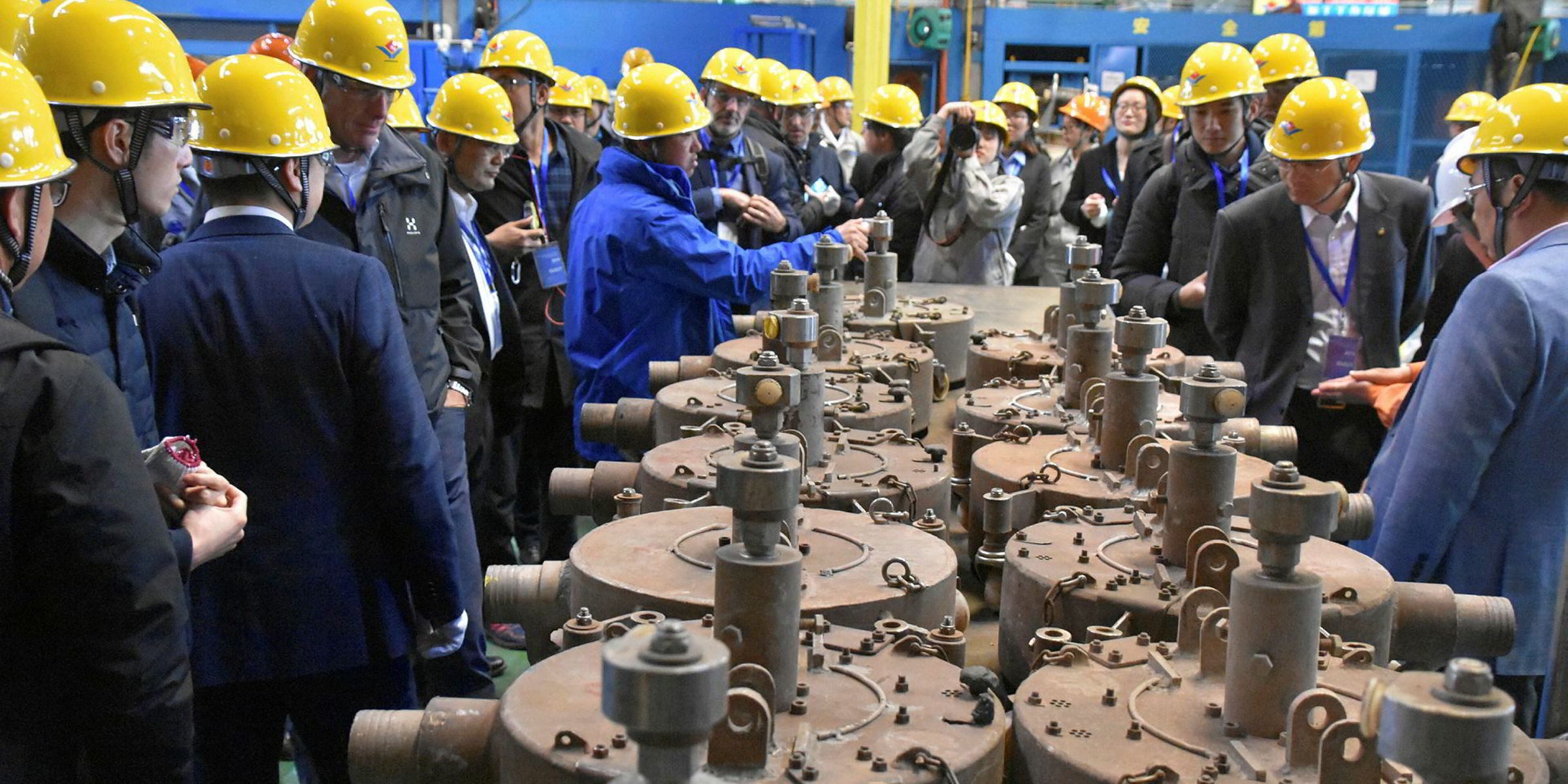
Although the local Zhoushan government has also been generous with praise and encouragement, Chen said there are no financial subsidies attached.
For the time being, high-pressure water blasting, including the investment in newly developed equipment, is about 15% more costly than grit blasting. Chen said IMC-YY is not passing on the cost to customers as shiprepair is not priced on a per-item basis.
"But if you count the cost of the whole process, including disposing of the waste, the cost is lower," he said.
He said the yard has invested about CNY 300m ($44.7m) in greening its technology over the last four years.
"It all comes out of the IMC-YY operating profits," he said.
Although the industry is price competitive with low margins, he added that the yard he runs turns a profit every year.
